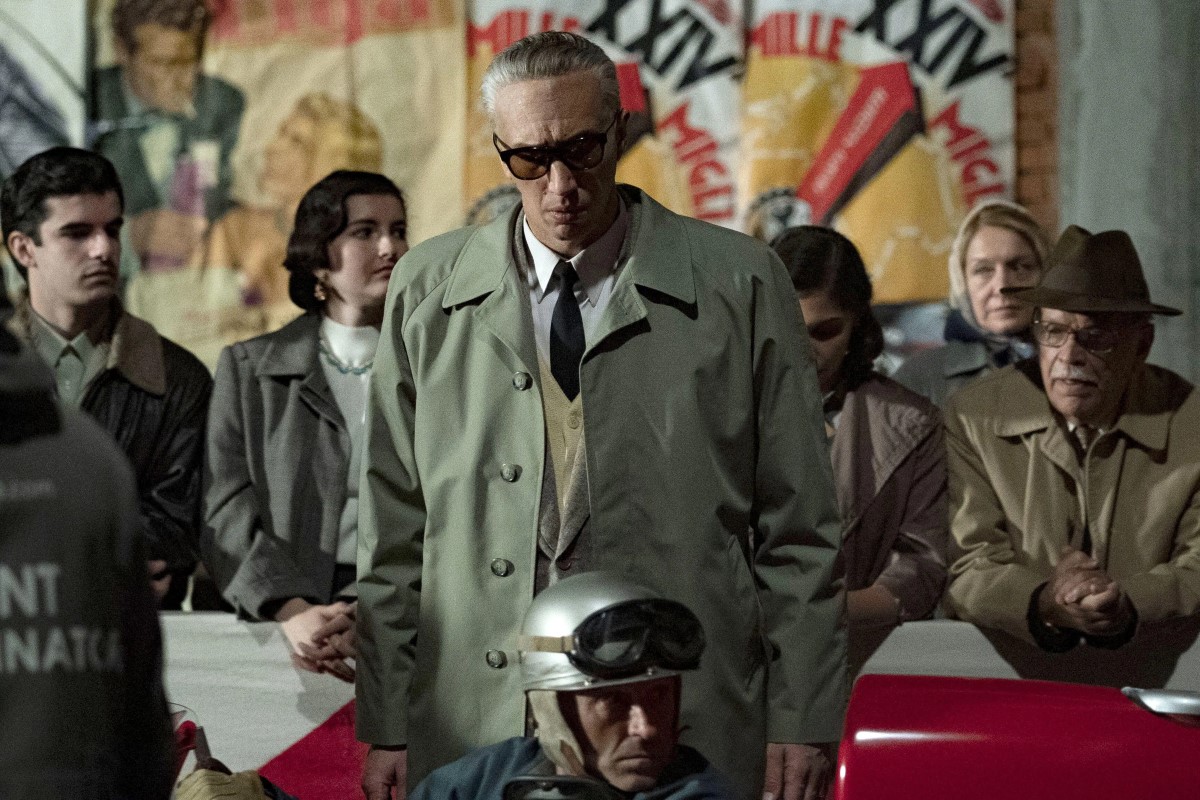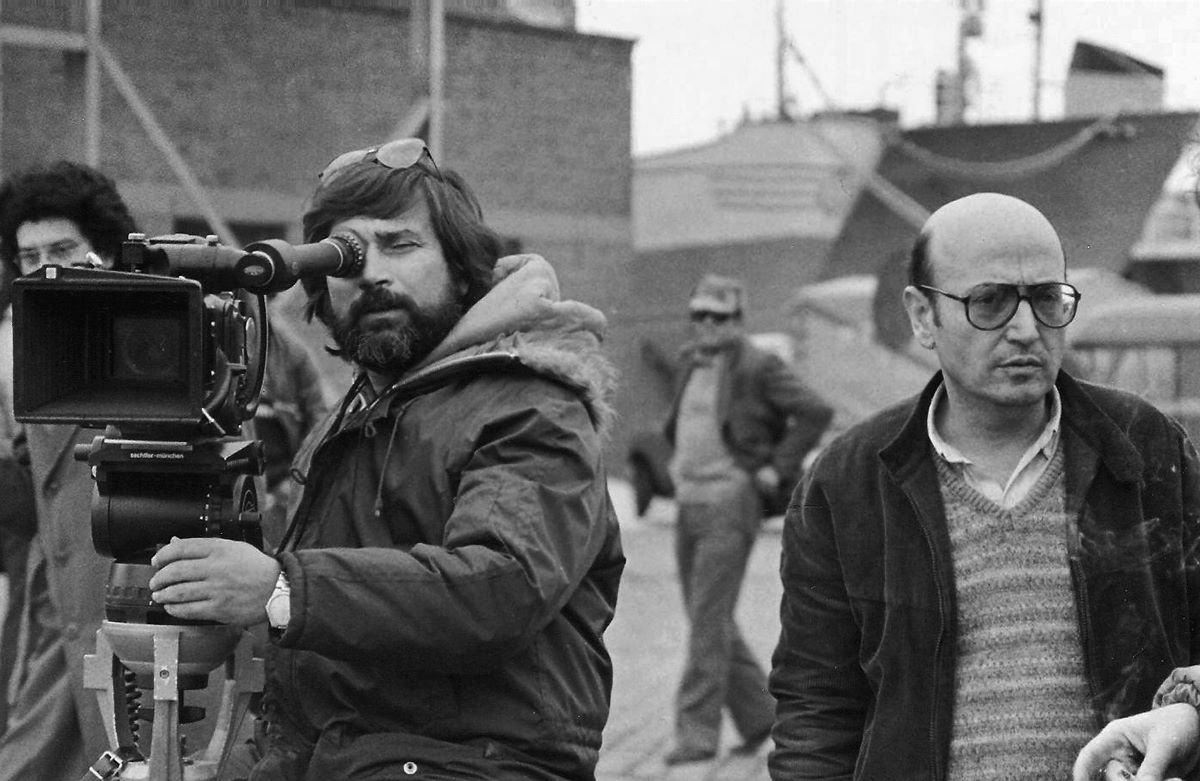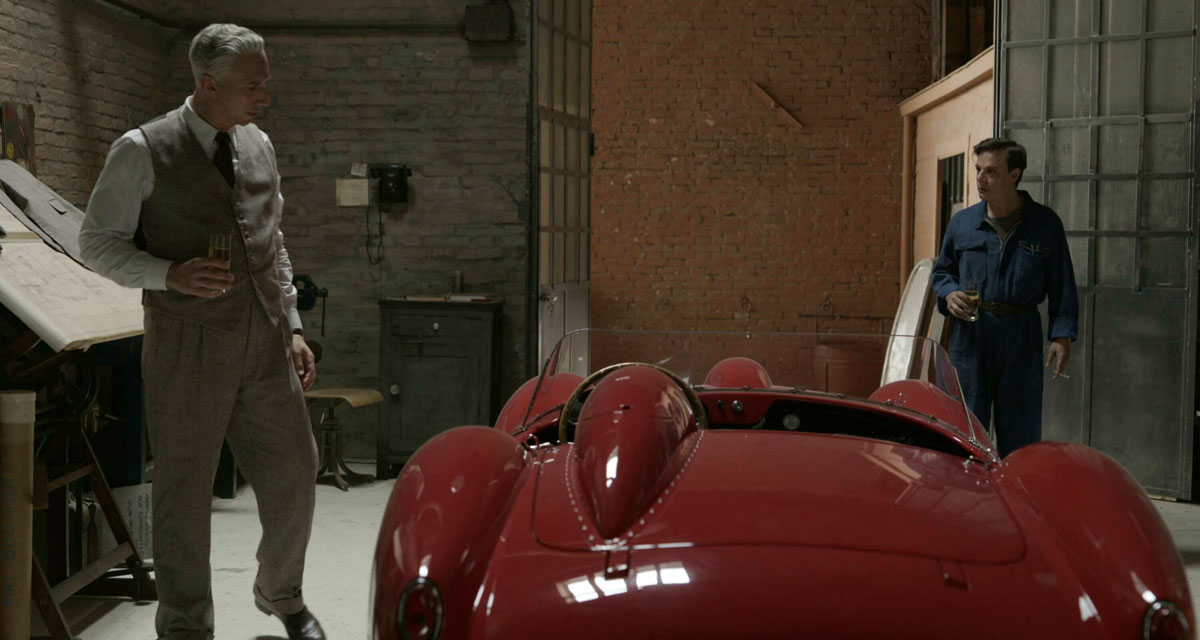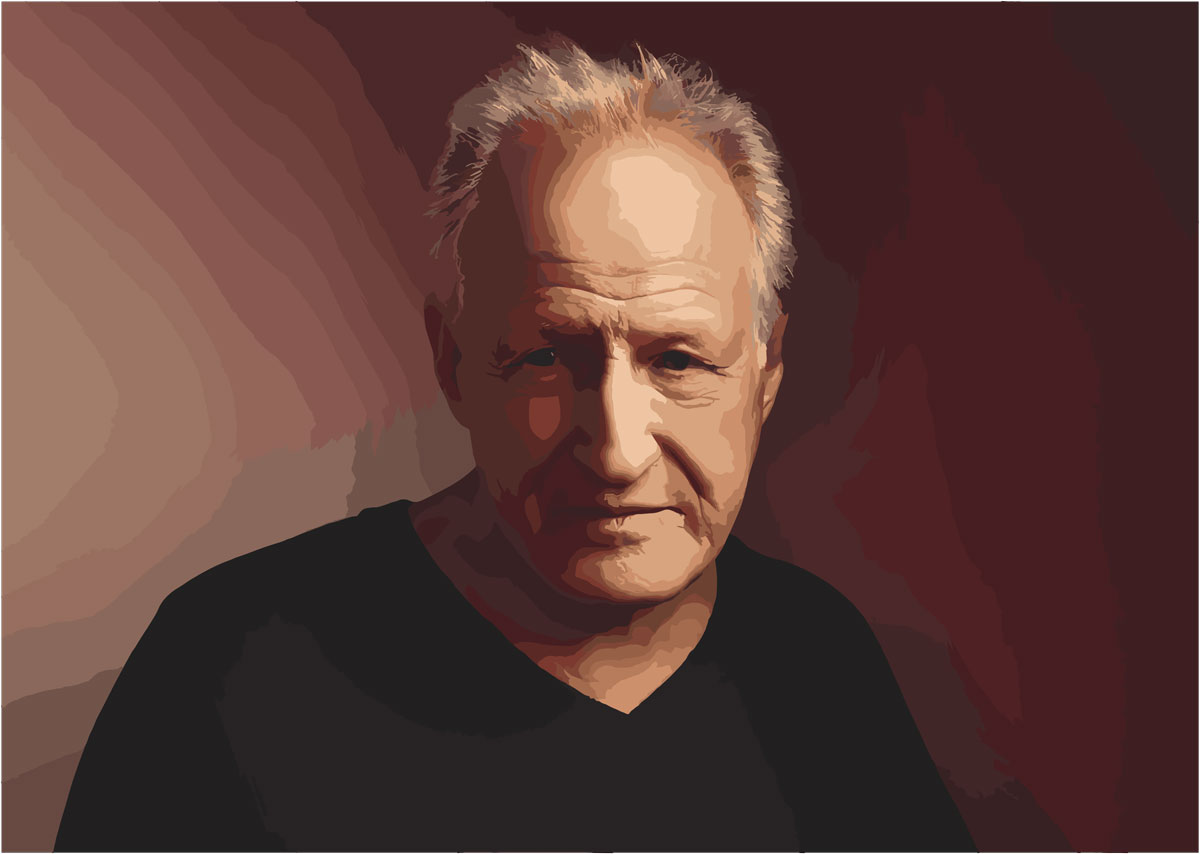Professional triumphs and personal chaos: Enzo Ferrari’s life takes center stage in Michael Mann’s latest film
VENICE. “In 1967, at the age of 24, while studying cinema in London, I saw a Ferrari for the first time. Waiting to cross the street in the rain, a blue 275 GTB/4 pulled up at the traffic light. I had never witnessed something that conveyed such power and beauty simultaneously. It was a miraculous sculpture, a form projected into the future. At that moment, I didn’t even know who Enzo Ferrari was.” Michael Mann recounts his initial encounter with a Maranello sports car, many decades before he envisioned distilling the myth into Ferrari. The film premiered at the Venice Film Festival and will hit theaters on December 14. “It’s not a biopic; for those, there’s the History Channel,” says the director of unforgettable titles like Heat, The Last of the Mohicans, Insider, and the biopic Ali, while marveling at speedboats racing on the lagoon from the terrace of the luxurious Hotel Cipriani. “What fascinates me about Enzo is the operatic nature of his life. Beyond the image of the icy entrepreneur, concealed behind the lenses of his sunglasses, there was a man pulled by opposing forces: an engineer driven by logic and rationality in business, exposed to chaos in private life, guided by pleasure, with a hidden lover and a very close relationship with his wife, whom he detested. In cinema, these forces usually find a happy resolution, but life is not that simple.
We find ourselves in 1957, with Enzo Ferrari (Adam Driver) grappling with serious financial challenges. His manager, Giacomo Cuoghi (Giuseppe Bonifati), informs him that his company, to survive, must sell more cars and attract the investment of a more significant manufacturer. However, the engineer is solely focused on how to beat Maserati in the upcoming Mille Miglia. For this, he adds the new talented driver Alfonso de Portago (Gabriel Leone) to his team, which also includes Peter Collins (Jack O’Connell) and Piero Taruffi (Patrick Dempsey). Meanwhile, his private life is in chaos: after the death of his son Dino from muscular dystrophy, his relationship with his wife Laura (Penélope Cruz), who has the power to sign on business assets, is tumultuous, to say the least. Despite her granting him various escapades for some time, she is unaware of Enzo’s greatest secret: the existence of his lover Lina Lardi (Shailene Woodley), who lives hidden just outside Modena with their son Piero (Giuseppe Festinese).
To bring to life what Mann describes as “a compelling melodrama” about the founder of perhaps the most beloved automotive brand on the planet, it took thirty years. “My friend, the late Sydney Pollack, also a fan of the Cavallino myth, told me in the early ’90s about the screenplay that Troy Kennedy Martin had written, inspired by Brock Yates’ book Enzo Ferrari: The Man and the Machine and which, with some modifications, became the basis for this film. In three months, the story of a fatherless man, without a heritage, who forged his own future, was condensed. Enzo thought of becoming a singer or a sports journalist, but then he became a racing driver and finally the creator of Ferrari.
The film was supposed to be shot in 2015 with Christian Bale, but the project fell through once again. What caused this long wait?
I could have shot it several times, in 2010 and then in 2015, but I would have had to do it with half the budget later approved [around $95 million]: it would have been a diluted version of the story. The problem is that for a long time, the American market was not ready: Formula 1 was overshadowed by Nascar [the most popular racing circuit in the States], and no one wanted to invest in the film. Then things changed, especially thanks to the Netflix show Formula 1: Drive to Survive. Today there are even three Grand Prix races in the USA and millions of fans.
What led you to choose Adam Driver and Penélope Cruz for the roles of Enzo and Laura?
I appreciated Adam in Marriage Story and Logan Lucky. His artistic ambition attracted me: he would do anything to nail a character. As for Penélope, she has the strength and courage that Laura needed, as well as an uncommon predisposition to be very direct, a perfect quality for that role.
How did you try to incorporate foreign actors and your American sensibility into a story and context like that of Modena in the 1950s?
We did a lot of research. I went to Modena and tried to capture the spirit of the people, who live on heated dualisms: there are two opera theaters, Comunale and Storchi, two high-level football teams, Modena and Sassuolo, and two stables, Ferrari and Maserati. Adam managed to capture Enzo’s defensive stance, typical of the Modenese. We shot in the real places of the story, even the same barber shop where Enzo cut his hair. As for the language, instead of having the actors speak English, we opted for American with an Italian accent.
What role did Ferrari play in the making of the film?
“They certainly don’t need my film for advertising. I have been friends with Piero Ferrari for many years, and I have to thank him and John Elkann because they gave us full support. Gabriele Lalli, manager in charge of Ferrari Classiche, invited us to see how the Lampredi V12 engine from the ’50s works. And he allowed us to record the original sounds of those racing cars, to reuse them in the film. His team spent weeks digging through reports and forensic investigations at the prefecture to allow us to accurately reconstruct the Guidizzolo accident in the film: 11 deaths, including the driver Alfonso de Portago and co-driver Edmund Nelson.”
Did you have the cars available for shooting?
Yes, but only to perform 3D scans with laser technology and recreate their bodywork so that we had identical cars [about $6 million was spent on this]. In the film, there are also some vintage cars, like the Maserati that was lent to me by Nick Mason, the drummer of Pink Floyd, a friend. But the cars are not the focus of this story: in telling the Mille Miglia, I tried to put the spectators in the drivers’ point of view. Too often in racing movies, the scenes are spectacular but unrealistic.
More than the cars, the protagonists are the drivers: Taruffì, Moss, the unfortunate de Portago, men who truly challenged death at every turn. What attracted you to these figures, and how did you want to represent them?
At the time, they didn’t even use seat belts; many died: Musso, Collins, Castellotti, de Portago. I was fascinated by the origins of the latter: he was an aristocrat, excelling was the norm for him. I saw an interview with him, and I was struck by how direct he was: he recognized his own failures but had boundless ambition and thought he was destined. It’s no coincidence that Enzo Ferrari titled his autobiography My Terrible Joys. Because he knew that when you race, you are dependent on the joy that victory can give you, but at the same time aware that tragedy is just around the corner. I also know that euphoria that speed can provoke.
In what sense? “For about six years, from the late ’90s, I participated in the Ferrari Challenge. But I wasn’t fast enough. If I turned for 75 laps, maybe only one or two were good. But as a filmmaker, the experience helped me understand that when you’re on the track, the car becomes an extension of your body. And you no longer think about the present but the future: the next turn, the next straight.” In the end, after seeing that Ferrari at 24, did you manage to fulfill the dream of owning one?
I’ve had more than one in my life: the first was a 308. But in a sense, I really fulfilled the dream only when Jean Todt, former CEO of Ferrari and my friend, called me to tell me: Michael, you have to take the Ferrari 599 because it’s the first time since the 275 GBT/4 that all the technology and design of Formula 1 enter a road car. And so, when I laid my hands on my shiny 599 GTO, I felt great joy. It even seemed to me that I was getting young again.
Translated by Chris Montanelli
* * *
Original article
TRIONFI PROFESSIONALI E CAOS NELLA VITA PRIVATA: LA STORIA DI ENZO FERRARI È ORA UN FILM DIRETTO DA MICHAEL MANN
di Marco Consoli
VENEZIA. «La prima volta che ho visto una Ferrari era il 1967, avevo 24 anni e studiavo cinema a Londra. Aspettavo di attraversare la strada, sotto la pioggia,e al semaforo arrivò una 275 GTB/4 di colore blu: non avevo mai visto qualcosa che esprimesse al contempo così tanta potenza e bellezza. Era una scultura prodigiosa, una forma proiettata nel futuro. A quel tempo non sapevo nemmeno chi fosse Enzo Ferrari». Michael Mann racconta così il suo primo incontro con un bolide di Maranello, molti decenni prima di immaginare di distillare il mito in Ferrari, il film presentato in anteprima alla Mostra del Cinema di Venezia e ora, dal 14 dicembre, in sala. «Non è un biopic, per quelli c’è History Channel, mi dice il regista di titoli indimenticabili come Heat – La sfida, L’ultimo dei Mohicani, Insider – Dietro la verità, ma anche la cinebiografia Ali, mentre ammira sfrecciare i motoscafi sulla laguna, dalla terrazza del lussuoso Hotel Cipriani. «Quello che mi affascina di Enzo è la natura operistica della sua vita. Ben oltre l’immagine dell’imprenditore glaciale, nascosto dietro le lenti dei suoi occhiali da sole, c’era un uomo trascinato da forze in opposizione tra loro: un ingegnere tanto guidato da logica e razionalità negli affari, quanto esposto al caos nella vita privata, guidata invece dal piacere, con un’amante nascosta e un rapporto strettissimo con la moglie che però detestava. Al cinema di solito queste forze trovano una felice risoluzione, ma nella vita non è tutto così semplice».
Siamo nel 1957 ed Enzo Ferrari (Adam Driver) sta affrontando gravi difficoltà finanziarie. Il suo manager, Giacomo Cuoghi (Giuseppe Bonifati), gli dice che la sua azienda, per sopravvivere, deve vendere più auto e attrarre l’investimento di un costruttore più importante. Ma l’ingegnere è concentrato solo su come riuscire a battere la Maserati nell’imminente Mille Miglia, e per questo aggiunge il nuovo talentuoso pilota Alfonso de Portago (Gabriel Leone) al suo team in cui figurano anche Peter Collins (Jack O’Connell) e Piero Taruffi (Patrick Dempsey). La sua vita privata intanto è nel caos: dopo la morte per distrofia muscolare del figlio Dino, il rapporto con la moglie Laura (Penélope Cruz), che ha il potere di firma sui beni aziendali, è a dir poco tumultuoso. E nonostante lei da tempo gli conceda varie scappatelle, non conosce il più grande segreto di Enzo: l’esistenza della sua amante Lina Lardi (Shailene Woodley), che vive nascosta poco fuori Modena con il loro figlio Piero (Giuseppe Festinese).
Per realizzare quello che lo stesso Mann descrive come «un avvincente melodramma» sul patron del marchio automobilistico forse più amato del pianeta, ci sono voluti trent’anni. «È stato il mio amico, il compianto Sydney Pollack, anche lui appassionato del mito del Cavallino, a parlarmi all’inizio degli anni 90 della sceneggiatura che Troy Kennedy Martin aveva scritto ispirandosi al libro Enzo Ferrari: The Man and the Machine di Brock Yates (in Italia pubblicato ora da Garzanti con il titolo Ferrari. L’uomo, l’auto, il mito) e che, con qualche modifica, è diventata l’impianto di questo film. In tre mesi c’era concentrata la storia di un uomo orfano di padre, senza patrimonio, che aveva forgiato il proprio futuro. Enzo pensava di fare il cantante o il giornalista sportivo, ma poi diventò pilota automobilistico e infine il creatore della Ferrari».
Il film si sarebbe dovuto girare nel 2015 con Christian Bale, ma il progetto tramontò ancora una volta. A cosa è dovuta questa lunga attesa?
«Avrei potuto girarlo varie volte, nel 2010 e poi nel 2015, ma avrei dovuto farlo con la metà del budget poi approvato (attorno ai 95 milioni di dollari, ndr): sarebbe stata una versione diluita della storia. Il problema è che per tanto tempo il mercato americano non era pronto: la Formula 1 era eclissata dalla Nascar (il circuito delle corse automobilistiche più popolare negli States, ndr) e nessuno voleva investire nel film. Poi le cose sono cambiate, soprattutto grazie allo show Netflix Formula 1: Drive to Survive. Oggi ci sono addirittura tre Gran Premi negli Usa e milioni di fan».
Cosa l’ha spinta a scegliere Adam Driver e Penélope Cruz per i ruoli di Enzo e Laura?
«Adam lo avevo apprezzato in Storia di un matrimonio e in La truffa dei Logan. Mi aveva attratto la sua ambizione artistica: farebbe qualsiasi cosa pur di centrare un personaggio. Quanto a Penélope ha la forza e il coraggio di cui aveva bisogno Laura, oltre a una non comune predisposizione ad essere molto diretta, qualità perfetta per quel ruolo».
Come ha cercato di inserire attori stranieri e la sua sensibilità americana in una storia e in un contesto come quello della Modena degli anni Cinquanta?
«Abbiamo fatto molte ricerche. Sono stato a Modena e ho cercato di catturare lo spirito delle persone, che lì vivono di accesi dualismi: ci sono due teatri dell’Opera, il Comunale e lo Storchi, due squadre di calcio di alto livello, il Modena e il Sassuolo, e due scuderie, Ferrari e Maserati. Adam è riuscito a interpretare bene lo stare sulla difensiva di Enzo che è anchetipico dei modenesi. Abbiamo girato nei luoghi reali della vicenda, persino lo stesso negozio di barbiere dove Enzo si tagliava i capelli. Quanto alla lingua, anziché fa parlare gli attori in inglese abbiamo optato per l’americano con accento italiano».
Che ruolo ha avuto la Ferrari nella realizzazione del film?
«Non hanno certo bisogno del mio film per farsi pubblicità. Sono amico di Piero Ferrari da molti anni e devo ringraziare lui e John Elkann perché ci hanno dato pieno supporto. Gabriele Lalli, manager a capo della sezione Ferrari Classiche, ci ha invitato a vedere come funziona il motore LamprediV12 degli anni 50. E ci ha permesso di registrare i suoni originali di quei bolidi, per riutilizzarli poi nel film. Il suo team ha passato settimane a scavare tra le perizie e le indagini forensi in prefettura per permetterci di ricostruire con accuratezza nel film l’incidente di Guidizzolo: 11 morti, compresi il pilota Alfonso de Portago e il copilota Edmund Nelson».
Avete avuto a disposizione per le riprese anche le vetture?
«Sì, ma soltanto per eseguire delle scansioni 3D con tecnologia laser, e ricrearne la carrozzeria in modo da avere delle auto identiche (per farlo sono stati spesi circa 6 milioni di dollari, ndr). Nel film ci sono anche alcune auto d’epoca, come la Maserati che mi è stata prestata da Nick Mason, il batterista dei Pink Floyd, un amico. Ma non sono le auto al centro di questa storia: nel raccontare la Mille Miglia ho cercato di mettere gli spettatori nel punto di vista dei piloti. Troppo spesso nei film sull’automobilismo legare sono spettacolari ma poco realistiche».
Più che le auto, protagonisti sono i piloti: Taruffì, Moss, lo sfortunato de Portago, uomini che sfidavano davvero la morte a ogni curva. Cosa l’attraeva di queste figure e come ha voluto rappresentarle?
«All’epoca non usavano nemmeno le cinture di sicurezza, morirono in tanti: Musso, Collins, Castellotti, de Portago. Di quest’ultimo mi affascinavano le origini: era un aristocratico, per lui eccellere era la norma. Ho visto una sua intervista e mi ha colpito quanto fosse diretto: riconosceva i propri fallimenti, ma aveva un’ambizione smisurata e pensava di essere un predestinato. Non è un caso che Enzo Ferrari abbia intitolato la propria autobiografia Le mie gioie terribili. Perché sapeva che quando corri sei dipendente dalla gioia che ti può dare la vittoria, ma allo stesso tempo consapevole che la tragedia è dietro l’angolo. Conosco anche io quell’euforia che ti provoca la velocità».
In che senso? «Per circa sei anni, dalla fine degli anni 90, ho partecipato al Ferrari Challenge. Ma non ero abbastanza veloce. Se giravo per 75 giri, magari solo uno o due erano buoni. Ma da filmmaker l’esperienza mi è servita per capire che quando sei in pista l’auto diventa un’estensione del tuo corpo. E non pensi più al presente, ma al futuro: la prossima curva, il prossimo rettilineo». Alla fine, dopo aver visto quella Ferrari a 24 anni, è riuscito a coronare il sogno di possederne una?
«Ne ho avuta più di una nel corso della vita: la prima è stata una 308. Ma il sogno in un certo senso l’ho coronato davvero solo quando Jean Todt, ex amministratore delegato della Ferrari e mio amico, mi ha telefonato per dirmi: Michael, devi prendere la Ferrari 599, perché è la prima volta dai tempi della 275 GBT/4 che tutta la tecnologia e il design della Formula 1 entrano in un’auto da strada. E così, quando ho messo le mani sulla mia 599 GTO fiammante, ho provato una grande gioia. Mi è sembrato persino di tornare giovane».
il Venerdì, 8 dicembre 2023




